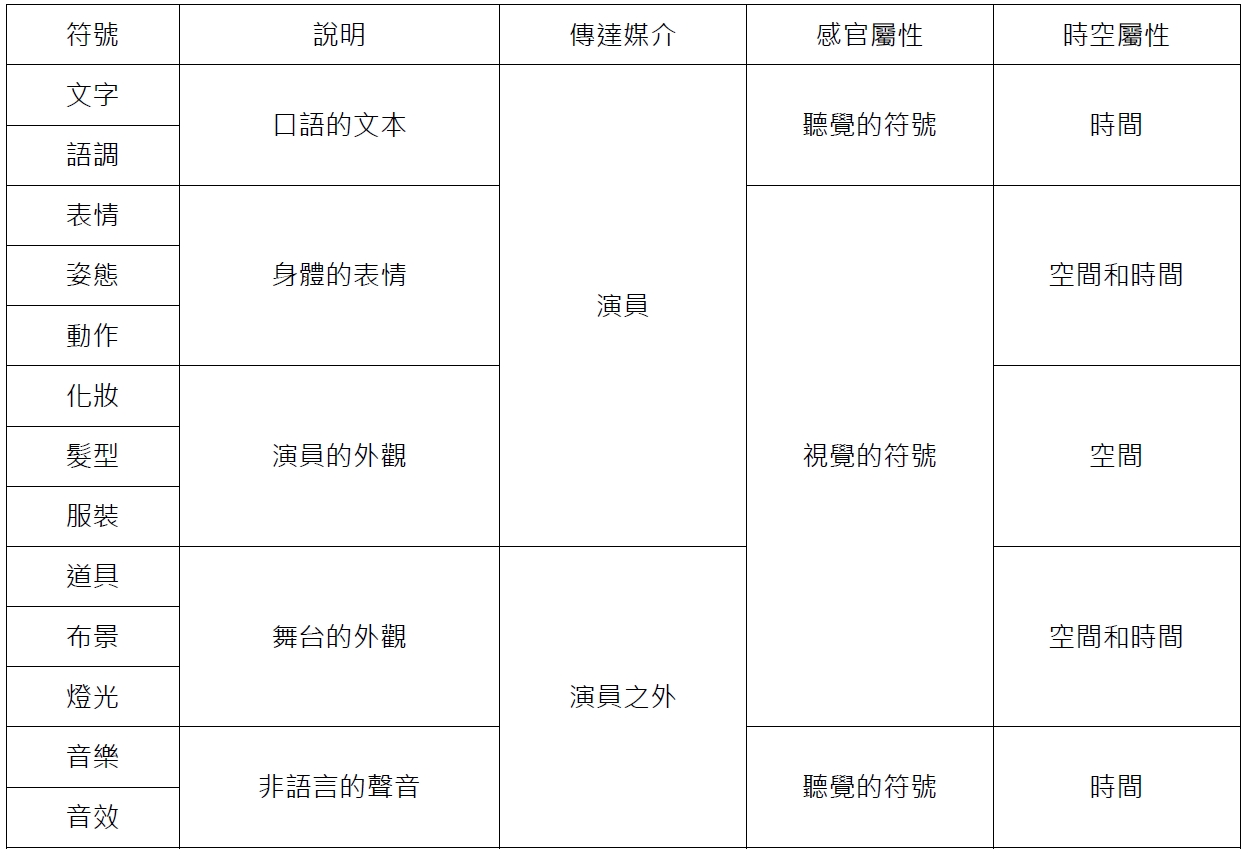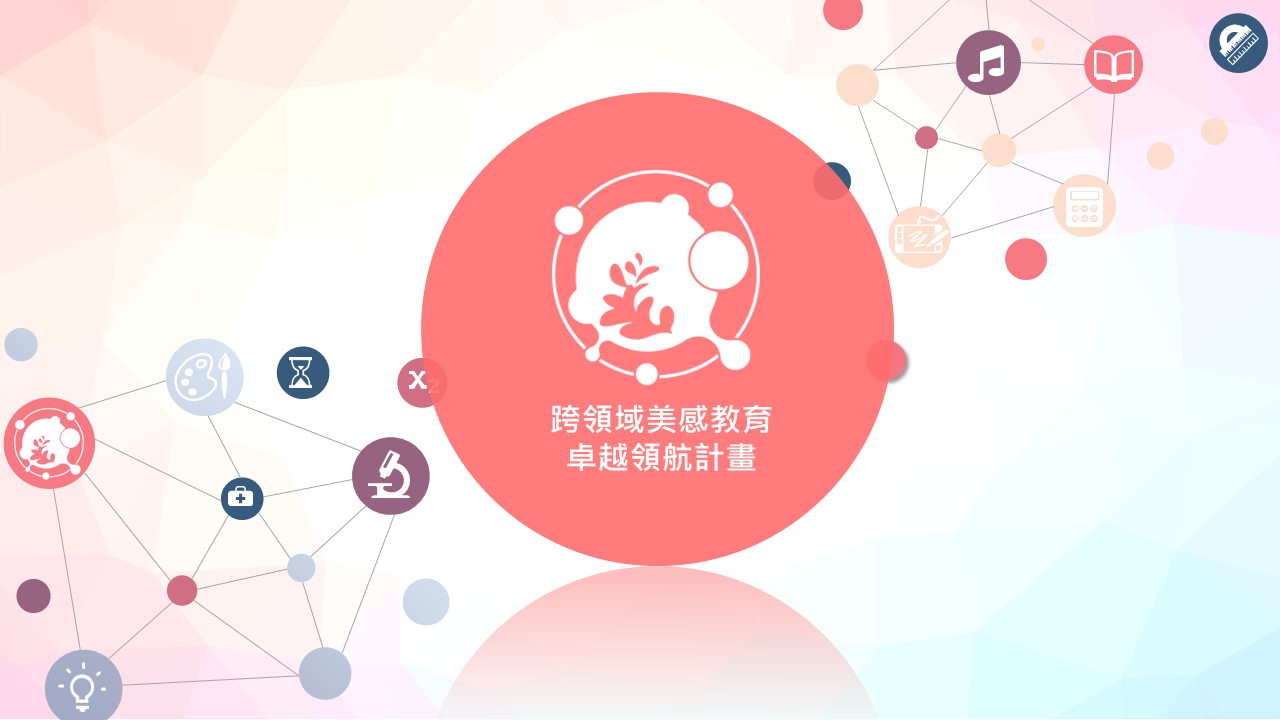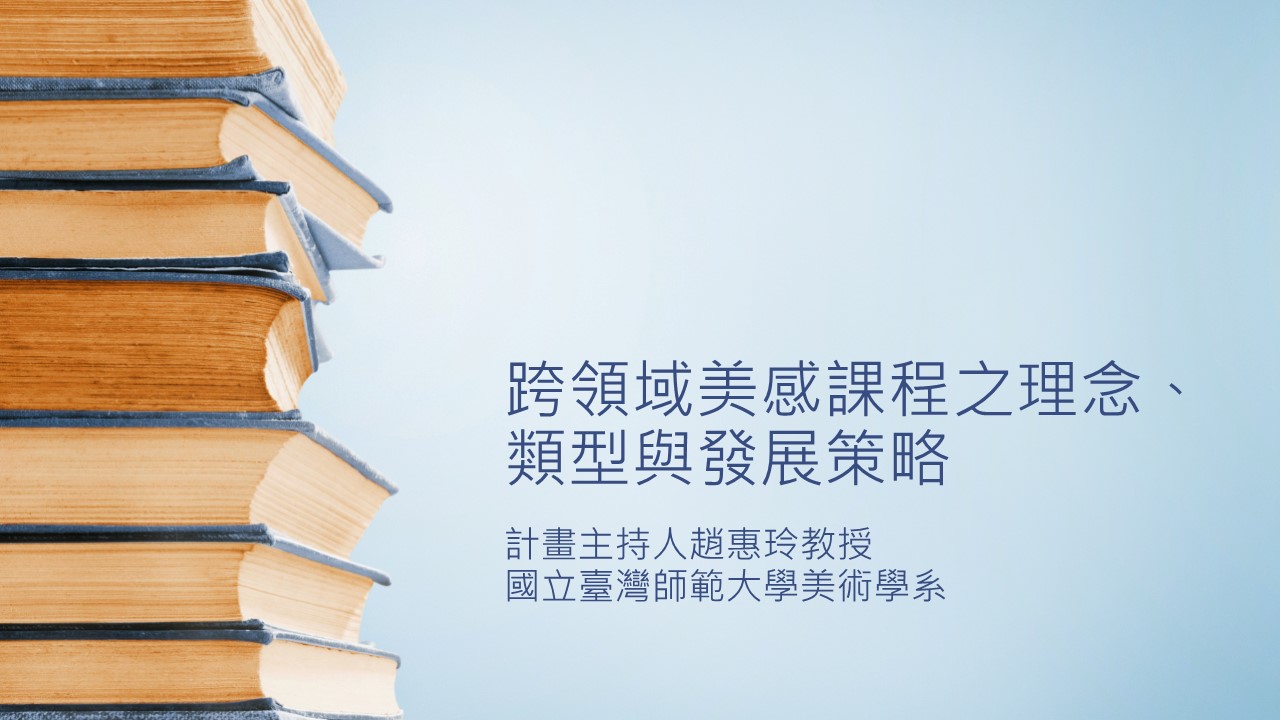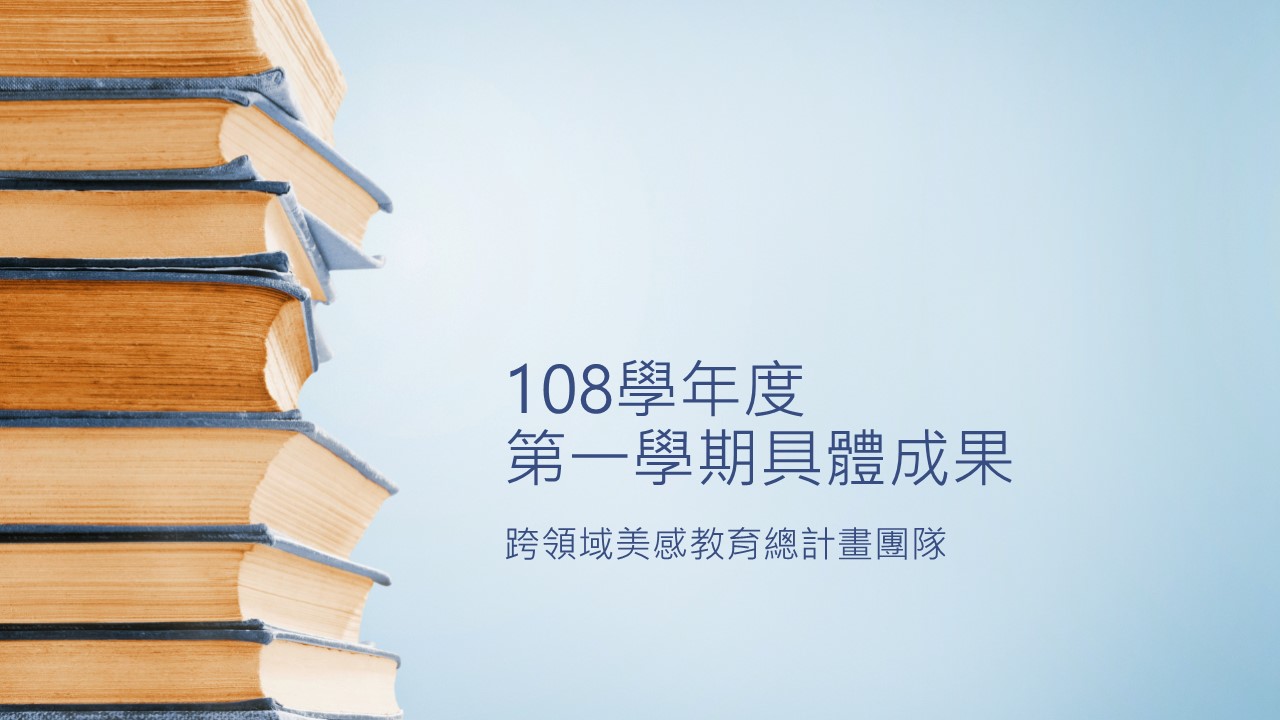Drama Reading/Transcendence, Introducing Aesthetic Learning Experience
Project co-host Chen Yunwen, National Taiwan Normal University Institute of Performing Arts, adjunct associate professor
The paradigm shift of contemporary education and the aesthetic turn of art lead people to look away from the self-sufficiency of knowledge and art and educators/creators delivering information in high positions to the relationship between art and social life and the subject initiative of learners/participants. It is recognized that the aesthetic experience induced by art is not only autonomous and heterogeneous, but may also transcend individuals, time and space, and produce extra-artistic effects such as empathy, aesthetic diffusion and learning transfer. Drama in educational settings also opens up new opportunities for practice and discussion by constantly redrawing, interpreting fields, and analyzing components. Strategies of breaking into parts, deconstructing, and reconstructing are used to expand the vocabulary of expression and nodes of contact. The boundaries have been pushed and loosened, making possible cross-field cooperation and integration that breaks through the disciplinary framework.
It has been nearly 20 years since the nine-year consistent curriculum officially included drama in the national education curriculum in the name of performing arts. During this period, the 1989 provisional curriculum first focused on creative drama, and the 92 curriculum expanded to include areas such as "using body and voice expression as the main media to engage in artistic performance", and music and visual arts in the fields of art and humanities. It operates through fuzzy division of subjects, collaborative teaching and curriculum integration; the 1997 curriculum re-highlights the formal characteristics of various arts and emphasizes the function and value of art learning; the 108 curriculum changes to the name "art field" to unify music , visual arts/fine arts, and performing arts/arts and life, emphasizing the core competencies to connect and integrate learning in various fields/subjects/learning stages (Ministry of Education, 2000, 2003, 2011, 2018). Generally speaking, the syllabus combines the concepts of drama subject knowledge teaching and interdisciplinary integration. It not only recognizes that drama has an independent knowledge ontology and aesthetic evolution, but also contains the contemporary drama education perspective of it as a learning catalyst. However, in In terms of teaching practice, the study of the essence of drama is still the main focus (Wang Youhui et al., 2006; Lin Yuxian, Li Qichang, 2020).
The cross-field aesthetic course plan launched in 2003 breaks through the boundaries of inherent divisions and integration within the art field, advocating the use of art to connect interdisciplinary learning, bridging the gaps between different knowledge fields or between classroom knowledge and life experience. Diverse learning fields and diverse methods inspire individuals and groups to experience, learn and practice beauty, and at the same time add value to learning in various fields (Zhao Huiling, 2016). Art interdisciplinary courses provide a new approach, and also introduce and support the 108 curriculum to strengthen the integration and application of interdisciplinary or interdisciplinary courses. In view of the fact that the transfer of curriculum paradigm involves a series of changes from thinking, decision-making, implementation, revision to normalization, it is not only necessary to be tolerant of the gradual changes in the existing education ecosystem over time, but also to be more active in preparing future teachers to be on the job. Having gained relevant training in the early stages, the plan not only accompanies front-line teachers to develop cross-domain aesthetic courses for a long time, but also continues to communicate with the education administration and strive for recognition. In the third phase, the training of teachers and students will also be included in the key work projects. In 2021, when the epidemic is shrouded, I was not only fortunate to participate in the observation class of the Seed School, but also entered the classroom physically or online to explore cross-field aesthetic courses with high school students and teacher trainees.
Observing the cross-domain aesthetic course plans developed by the project over the years, the number of course plans that incorporate the subject into performing arts or initiate cross-domain learning by performing arts teachers has indeed grown. Further analysis based on the curriculum integration classification proposed by Jensenius (2012) shows that some of the plans operate in a "multidisciplinary" manner, that is, although teachers from different disciplines have common themes or goals, they still think from the perspective of their own disciplines. Subject knowledge structure; some adopt a "crossdisciplinary" perspective, in which teachers view other subjects from the perspective of their own subject or apply them for their own purposes; as for a higher level of integration, teachers are usually required to form a collaborative community to integrate different Subject knowledge methods, and even "interdisciplinary" or "transdisciplinary" curriculum solutions that transcend disciplinary perspectives, innovative knowledge frameworks and teaching procedures, are hard to come by. This may be due to objective restrictions in school teaching administration, or it may be due to the limitations of curriculum design and teaching staff's imagination of "using performing arts to carry out cross-domain aesthetic learning."
For this reason, I tried to start from my own academic background in drama education and experience in tutoring cross-domain aesthetic courses, respond to some myths and questions from the field side, and put forward the thinking and ideas of "drama reading/cross-domain, leading to aesthetic learning experience" method.
1. Rereading the Realm of Drama
"Body-based" live arts such as drama and dance are included in the national curriculum under the name of "performing arts". The exploration of the body and voice, and even the performance of characters and situations, are indeed the most prominent features of the subject. It also often brings about profound learning experiences that disturb thinking and emotions. But performance is actually only one aspect of drama, and it does not necessarily use all theater elements. Referring to the theater semiotic system proposed and widely cited by Polish semiotic scholar Kowzan (1968), the communication media undertaken by actors alone include spoken text from the script, and physical expressions and costume modeling that appeal to the viewer's vision, while other media can Symbols that supplement time and space clues, create environmental atmosphere, and appeal to the audience's imagination and perception include the configuration and use of objects in the space, music, sound, light and shadow, etc. In the theater, they are handled by different professional manpower and come into being after a certain period of negotiation, communication, design, production, rehearsal and adjustment, plus behind-the-scenes administrative support.
The communication of theater meaning is based on a common understanding of the rules and structures behind the symbol system by both viewers and performers. Therefore, the connotation of this symbol system will inevitably be adjusted with the evolution of the times and technology. Whether the work is moving or not , nor is it always tied to the superposition and abundance of symbols. For example, mime removes language and focuses on the correspondence between body expressions and musical rhythm; radio drama relies on auditory transmission, but also relies on the intermediary of equipment; "Stevie" was invited to perform at the 2010 Taipei Arts Festival "Stifter's Dinge" is an unmanned performance that conveys the philosophy of "emptiness" and uses mechanical devices to create a magical theater experience. When Covid-19 forced the theater to suspend all activities, it gave birth to theater practices that not only maintained physical distance and maintained/created social connections - actors met by the window to read plays, using exquisite texts and simple performances. , soothing the community neighbors standing in the alleys to watch; a theater troupe turned the deserted streets into a stage, allowing the audience in the car to follow the characters' situations to different scenes, witness the occurrence of the incident, and even become an important person; There are also "cloud theaters" that use digital technology for their own purposes, developing services for watching performances simultaneously online, breaking through the limitations of the physical theater space. All these illustrate that drama is a flexible and diverse art form that can recombine elements depending on objective conditions or subjective purposes to create different overall effects and unique aesthetic experiences.
2. Drama reading field
In schools, planning and executing drama performances can indeed provide diversified learning, allowing learners with different strengths to suit their needs, and giving every child the opportunity to achieve success. When conditions do not allow it, for example, the course is not aimed at cultivating practical performance skills, there is not enough time and appropriate space, and the class has not yet established the sense of security and ability to engage in public performances, perhaps it can be obtained from the performance model of Schechner (1988) Inspire, connect the practice of drama with personal/social changes, and realize that the influence of drama extends beyond aesthetic forms. It not only connects oneself and others, but also summons imagination and allows people to see society through the performance and embodiment of stories. complexity and cultural diversity.
Drama suspends real identities and travels through time and space. It does not cost too much, but it can trigger the projection of real emotions, connection of relationships, and even physical experience. This means that teachers can use the framework of drama and fiction to come up with teaching activities that are in line with the unit theme and are progressive, reset subject knowledge into the context of life, create a learning ground for safe exploration and practice of human issues, and provide students with imagination physical, emotional, or physical immersion experiences for authentic learning. In other words, if subject teachers want to use the beauty of drama to carry out theme teaching, instead of investing a lot of time and resources for a one-time performance, it is better to review the goals and teaching hours of the course, choose the most powerful dramatic communication medium, and use rituals to transcend reality and reality. Summon your common imagination and explore the learning content of the teaching unit calmly and deeply.
The late Cao Yonghe, an academician of Academia Sinica, emphasized that history is formed by the interaction and interweaving of three factors: "people, time, and space." I think it also applies to drama - whether it is the exploration of course themes or the evaluation of teaching sites. Taking "Kitamachi Style Painting" in Taitung High School 109-2 as an example, the course expects students to eventually be able to create stories and background music for famous Ukiyoe paintings, and produce a single or serial mini music video theater of famous paintings, which will be presented at the Kitamachi Japanese Architecture Park. . When I was invited by Teacher Xie Cuiling to design an empowerment workshop for students, I positioned the drama to "inspire students' diverse literacy and cross-disciplinary aesthetic creation", trying to understand the social and cultural context of the Edo period when Ukiyo-e was produced, representing artists and The similarities and differences in materials and styles, as well as the influence of ukiyo-e on subsequent art. As a result, I accidentally discovered "Hokusai Manga", which is like an enlightenment textbook on painting. It vividly depicts various aspects of life, natural scenery, gods and Buddhas in the Edo period, and is an excellent medium to guide students to embody paintings. The haiku poet's love for painting calendars contributed to the popularity and professionalization of ukiyo-e, and Hokusai's passion for "Kawa willow" after he passed his 60th year inspired the inspiration to combine the course with Chinese creation. Before further planning the trickle, it is necessary to know the composition of students, prior knowledge and experience, and the space configuration and equipment resources of the classroom, in order to determine reasonable and feasible learning tasks, homework methods and teaching processes; the basic principle is to start from simple to Complexity is more important than essence. It guides students to use the known to explore the unknown, allowing them to gradually build a sense of security and confidence in creating and publishing. In actual teaching, in addition to planning tasks individually, in groups or as a whole class, students can be given ample time to explore themes and media, create, share and respond to works. If the space configuration can be made good use of, it will be possible to adapt to the situation. / interactive relationship between watching and performing. For example, a podium is conducive to highlighting the focus and concentration, and the whole class faces the center of the (invisible) circle and forms a large circle to share on the spot, which can promote partnership and responsibility for each other and eliminate the fear of public presentation.
In the 2-class workshop, I first used wordless picture books as an introduction to the course, and invited students, including 6 cross-school elective students from Taitung Girls' High School, to tell stories through the pictures and guide them in a sentence-by-person manner. Pay attention to the details of the image, and relax your nerves in the tension and interest of improvising the plot or setting up suspense; then, Hokusai's self-narration and comments from others are introduced into the painting, and students are asked to use the body in the space to reproduce "Hokusai" The characters in "Zai Manga" were used to form a group portrait of the common people of Edo; then, the stereotyped short poems popular at the time were introduced, including "Haiku", "Jiyu", which described the climate and scenery, and "Kawayanagi", which described subtle emotional changes or satirized current affairs. , to get a glimpse of the secular spirit and popular interest of Ukiyo-e; finally, each group was given an Ukiyo-e work. After careful observation, they first used the structure of "five-seven-five" to create a short poem, and then adjusted the speed, volume, and Tone, appropriate inserts, echoes, repetitions, pauses, etc., transform words into auditory works for public sharing.
The overall experience quality and learning effectiveness of the course are not only due to the plan, but also to the shared experience on site. It relies on teachers to maintain a high degree of sensitivity, grasp the direction of the course, and adapt to changes. The results of most students' short poem creations are astonishing, going beyond copying what they see, to comprehending emotions and managing images, such as for Hokusai Hokusai's "Shunshu Ejiri": "The sky is full of fallen leaves and the clouds are scattered on the passers-by. When the wind blows, there is no need to worry." I wrote for Hiroshige Utagawa's "Azai Rain Shower at Ohashi Bridge": "A sudden rain fell on Anzai at Shinbashi Bridge, and the boatman swayed his oar, and the passers-by hid." I wrote for "A Cold Evening in Sumida" by Koho Shoda: " Starless and thin blue, the smoke from Yao Yao Lake is half flying in the sky and the broken willows are facing the autumn wind." But there are also those who respond to Utagawa Hiroshige's "Obashi Yasaka Yutachi" with a joking and straightforward "It suddenly rained and I can't drink anymore, so I have to go home." In order to keep students interested in learning and creating, I first affirm the work. The structure and language tonality are consistent with Sichuan Liu. After the task of translating the words into words, they are asked to further elaborate on the physical, mental and emotional state of the characters in the painting, and vividly reflect it through the use of voice expressions. As theater education scholar O'Neill said:
Teachers/artists need flexibility, a talent for invention and design, personal creativity, and the ability to leverage opportunities when they arise. In order to achieve this kind of transformative and dialogic teaching, teachers who are artists also need curiosity, the ability to focus on key issues, the ability to cope with uneasiness, uncertainty, and unpredictability, and a considerable tolerance for ambiguity. . (Taylor, 2006: 108).
3. Drama transcends territory
Professor Shi Lanmei from the Department of History of the National Normal University feels that history teaching requires new forms and strategies. In addition to introducing this project to teachers and students across departments and planning cross-disciplinary aesthetic enhancement workshops, he also encourages them to form independent learning communities. Apply what you learn and develop courses. Teacher students believe that the contextualization and physicality of drama are conducive to history teaching, so they chose to target high school sophomores, focusing on the "Petition Movement for the Establishment of the Taiwan Parliament", and designed an 18-session themed course in which drama is integrated into history. I consulted my teacher for the second time. Opinion.
Overall, semester courses give teachers more time and flexibility to develop the relationship between curriculum and teaching, and the opportunity to introduce diversified teaching activities that even adapt to the individual differences of students. The challenge lies in how to connect a series of learning experiences to achieve higher levels of learning. The overall course objectives at different levels; when designing a cross-field aesthetic course, it is not necessary to pursue connecting disciplines and using a large number of strategies. The goals of the course should first be clarified and used as a choice principle to determine course content, teaching process and time allocation. Only then can the rich development be truly carried out. A learning experience about aesthetics.
Since this set of themed courses is intended to "use drama to deepen history learning," I first point out that "the first section is introduction, the second to sixth sections are history teaching, the seventh to seventeenth sections are drama creation, production, rehearsal and performance, and the tenth section The session structure of the course "Eight Sessions Summary and Reflection" is open to discussion - even though in the process of developing the drama script and performance, there is an opportunity to further explore the historical context and key figures of the "Taiwan Parliament Establishment Petition Movement", the focus of the entire course is not It seems to fall into the practical work of preparing to present a play, but more like "introducing history and broadening the subject matter of drama teaching." I borrowed the curriculum map developed by the High School History Subject Center to illustrate that history, as a narrative version of choice, is not the whole story of events. Even if the above structure remains unchanged, thinking about drama creation from the perspective of historical understanding and historical interpretation, why not go beyond The dramatic pattern of historical texts tries to find out the gaps that are meaningful in terms of human nature but have been missed by historians: when focusing on historical figures and events, pay attention to whether personal words, deeds and positions will be different whether they are public or private. And creates tension, and an event is by no means as simple as rising to a climax and then falling in a single line.
On the other hand, the curriculum structure of history first and drama second is likely to miss the learning opportunity of using the drama framework to imagine and empathize with the people's situation at that time because of the knowledge first and the reproduction of intention. It is recommended to introduce drama education methods to allow students to be exposed to history. At the same time, you can enter the situation and role appropriately, and use the body, voice, text and other media to express your understanding and interpretation of the event. At the end of the first meeting, I hope that the teachers and students will have a clearer understanding of the drama methods introduced, and have a broader vision of history and historiography, so that the combination of history and drama will produce additive benefits rather than eliminate them. learning opportunities that each other can create.
The second meeting focused on the history teaching aspects of the original plan. The revised version indeed intertwined teaching aspects such as text reading, event simulation and drama writing more organically and closely. I'll take Milan. In "The Unbearable Lightness of Being", Kundera interrogates Nietzsche's conceptual expectations of "eternal return." Although this thematic course clearly focuses on the Taiwanese democratic movement in the early 20th century, perhaps the course does not end with the event. Full stop, but the clarity of hindsight. Imagine the effect/influence this event had on Japanese imperial governance/colonial expansion, as well as Taiwanese identity or pursuit of political democracy, and pay attention to how historical events were recorded and written by people from different positions. and interpretation.
In other words, drama adds value to the subject across boundaries, not necessarily through the introduction of explicit formal elements to enrich the aesthetic learning process, such as focus, metaphor, tension, ritual, contrast, symbolism, time and space, which are common to theater arts and classroom drama. Hidden elements (Neelands, 2010) may also broaden the horizons and reset the learning content to real and complex human situations, allowing the course to go deeper and further, and contain the beauty of understanding human relationships and affairs. As Liao Qianqiao (2012) explained, "cross-domain" is a movement process in which subjects stir, change, recombine, and create new things with each other. "There are infinite possible ways of connection between domains (single point and infinite Multi-point connection), the non-directional connection method is like a space full of lines with no beginning and end; such an open system is based on interaction, non-linear and non-causal relationship, but creates complex and continuous Diversity of change.”
Project host Dean Zhao Huiling (2016) stated that when planning cross-field aesthetic courses, “you should first consider the learning connotations of the teaching units of each discipline, then understand the characteristics of the artistic concepts and aesthetic elements in the collaborative art field, and think about their integration. We should adopt an integrated approach to avoid “integration for the sake of integration”. As can be seen above, as the subject draws more and more drama or drama into other subjects, there are no standardized methods and procedures. However, if teachers can fully grasp the connotation and characteristics of the subject and drama when designing courses, refer to curriculum scholar William E. . Doll), pay attention to the richness of meaning thinking, the regression of learning adjustments, the relevance of content concepts and the rigor of curriculum organization (Doll, 1999), plan learning activities that meet the curriculum goals and on-site conditions, and Maintaining sensitivity and openness during the teaching process will have the opportunity to induce rich, profound and continuously spreading aesthetic learning experiences.





